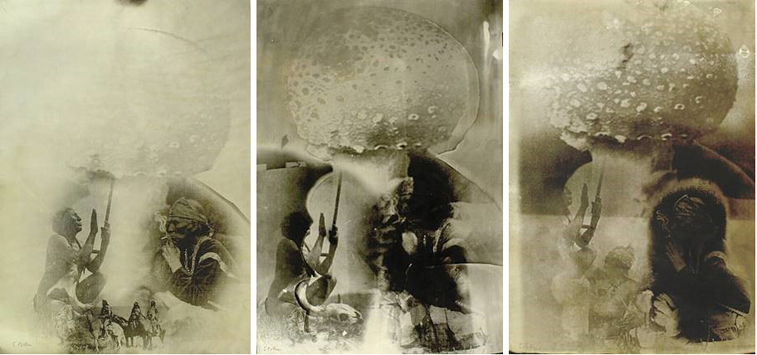Modern alchemist
Sigmar Polke (Olesnica, 1941-Cologne, 2010) has been called a modern alchemist: he is best known for his paintings, in which he mixes together all kinds of materials, such as paints, lacquers, resins and chemicals, and allows the results to be determined by the ensuing chemical reactions. In his photography, which he mainly concentrated on in the 1970s, he also experiments with chemical processes, the outcome of which is always different and unpredictable.
Chemical experiment
For the series São Paulo (1975), Polke takes the photographs in a gay bar in São Paulo, where he ends up while sheltering from a thunderstorm. The men in the bar pose for his camera. While printing the series, he experiments with the photographic process: mixing the chemicals of the developing solution and fixative together and folding the thin photographic paper in half so that it fits in the developing tray. Due to this, the liquids are not evenly distributed across the paper, which results in irregular and blotchy prints.
Mind-expanding
The series Ohne Titel (Fliegenpilz) (1975) revolves around the fly agaric toadstool, an important theme for Polke due to its mind-expanding effects. The subject of Fliegenpilz is an ancient ritual of the Native Americans of the Great Plains, in which the magic mushroom is worshipped. For the series, he photographs images from ethnographic books and prints them on top of each other on the same paper. Although Polke uses three to five similar images for each photograph, they are all unique due to the different chemical reactions.
Sigmar Polke’s photographic series in the collection of the Kröller-Müller Museum are from the Visser collection. Designer and art collector Martin Visser was particularly interested in Polke’s photographic work because, in his opinion, this was the closest to the artist himself.
Wall paint sponsor: 
Images: three prints from the series São Paulo, 1975 and Ohne Titel (Fliegenpilz), 1975


